Universal Audio Volt review: Pro studio pedigree at a home studio price
The Universal Audio name is synonymous with high-end audio hardware. Does its new and affordable Volt range offer anything more than a good badge?
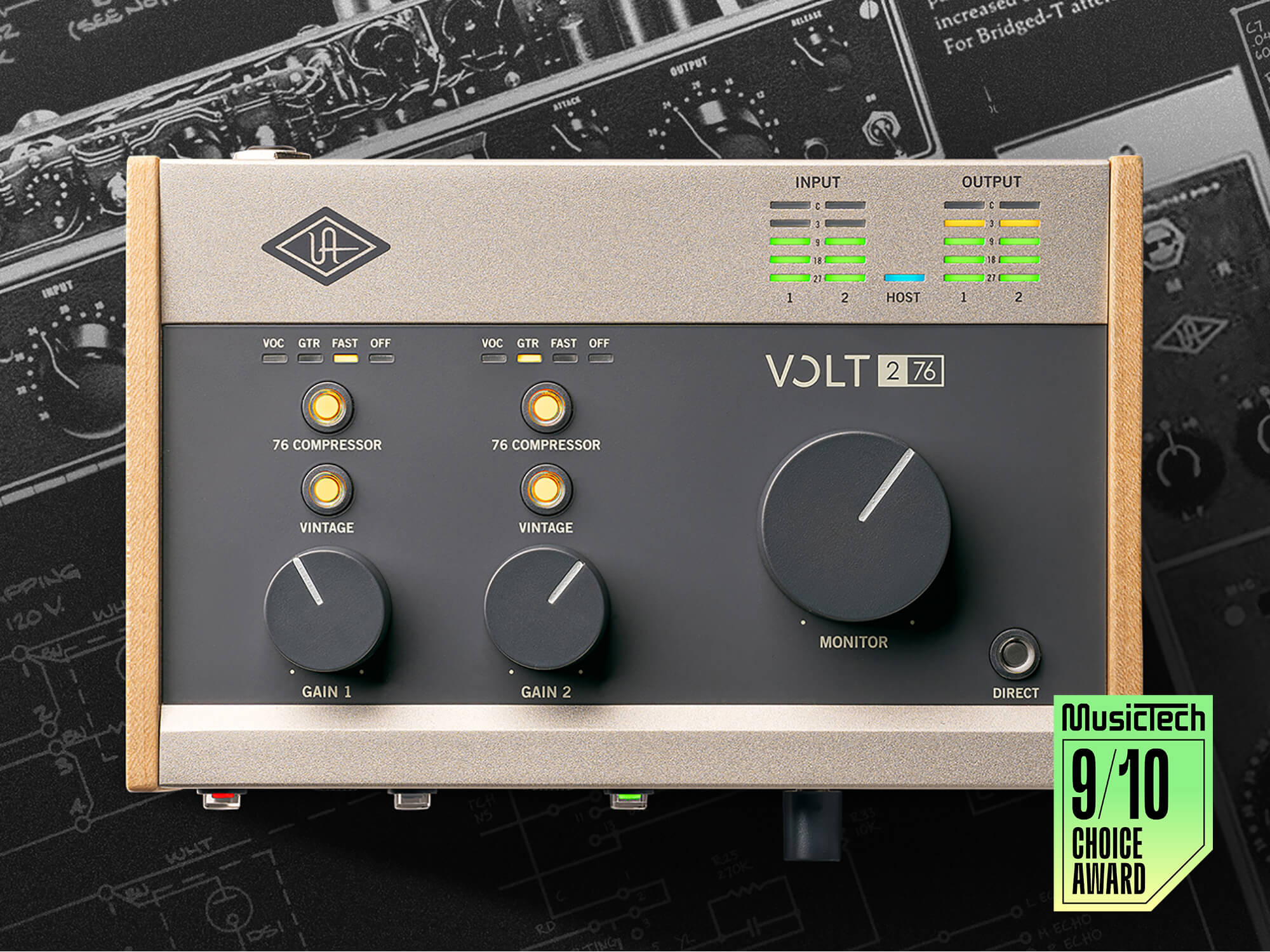
Review Overview
Our rating
9
Our verdict
’76 models: 9/10
⊕ Solid, well-built and good-sounding
⊕ Analogue circuitry benefits from UA’s decades of experience
⊕ Vintage preamp mode adds pleasing tube-like character
⊕ All-analogue compressor closely based on classic 1176 (’76 models only)
⊕ Attractive, affordable pricing
⊖ Per-input phantom power would be preferable to global
These capable and great-sounding audio interfaces are ideal for a first studio build, and a worthwhile upgrade for existing small setups.
Universal Audio (UA) is well known for its Apollo range of audio interfaces. A recipe of superb audio quality, onboard DSP, and many different I/O configurations delivers a dish that’s enjoyed by professional and semi-pro studios the world over. And while most would agree that Apollo is excellent value for money, the initial outlay makes it an impractical choice for those setting up their first studio or seeking to upgrade a small studio.
UA has dabbled with more affordable options before, most notably with the Arrow. However, the Arrow line is now renamed and sold as the new Apollo Solo, thereby making room for a new super-affordable UA range: the Volt.
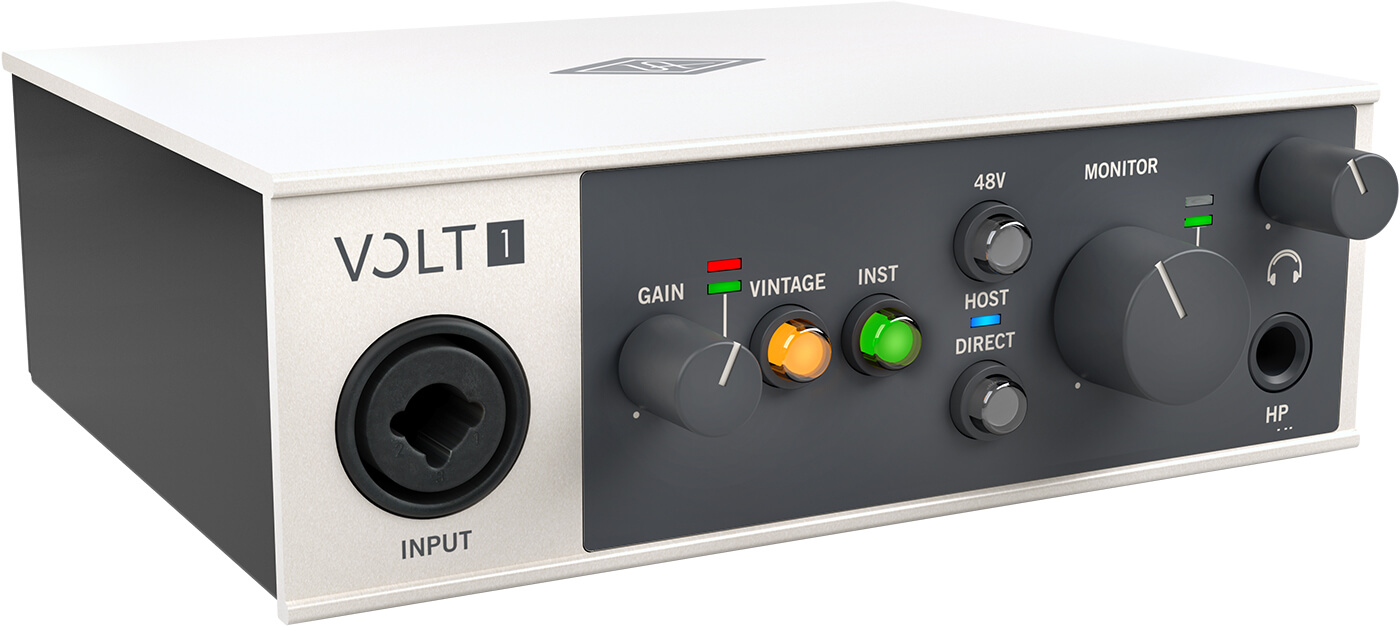
The Volt range
All models in the Volt range connect to the host Mac, PC or iOS device via good ol’ USB-2.0. The unit is designed to be bus powered too, although additional power can be connected using the included cable hooked up to a standard USB-style wall wart.
There are currently five models in the range: The Volt 1 and Volt 176 provide one input and two outputs; the Volt 2 and Volt 276, which we have in front of us here, have two ins and two outs, and are also available in packages that includes a condenser mic and headphones; and the daddy of the range, the Volt 476, has a full complement of four inputs and four outputs.
All units use front-facing XLR/jack combo sockets for their main inputs (the 476’s second pair of inputs are line-level only, and accessed via rear-facing jack sockets), with the jack connectors switchable between line and instrument level operation. 48V phantom power is provided for the XLR mic inputs, which is global and so affects all mic inputs when enabled.
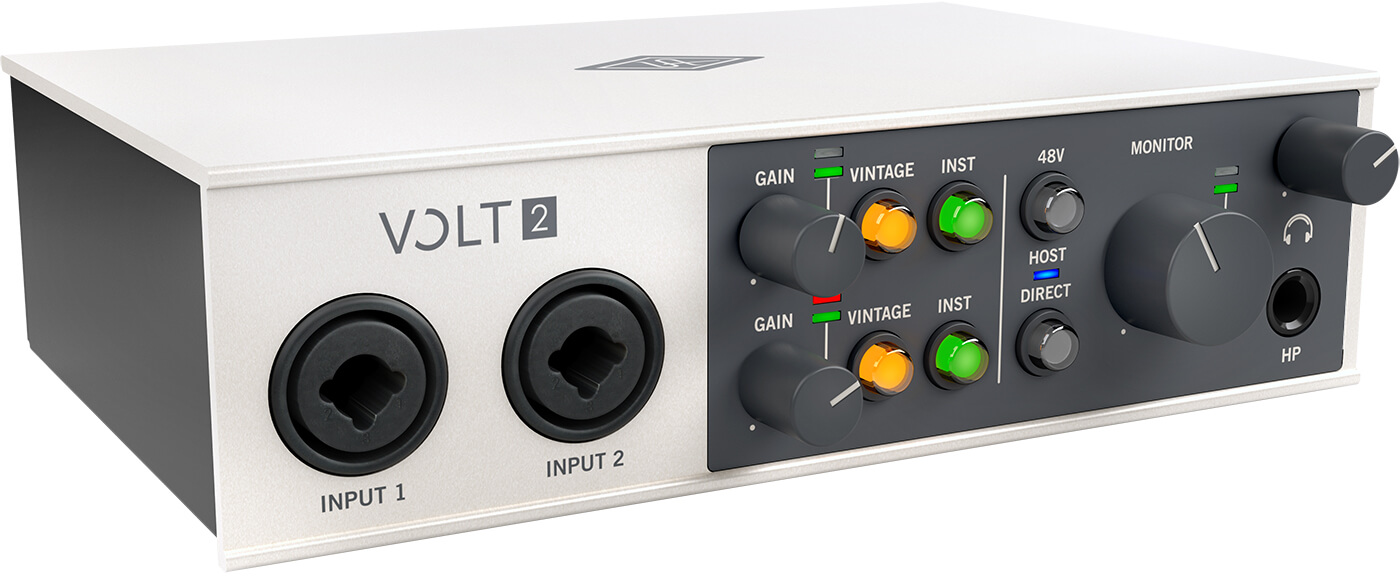
Volt’s outputs are all via a balanced TRS jack socket, located on the rear panel, and all units include a front-panel headphone output. The host is connected via a USB-C port, with a USB-C to USB-A cable included so that Volt can connect to standard USB-2 host ports without the need for a converter. Volt also sports MIDI I/O ports, which are always handy, and gives Volt a feature that’s notable in its absence from its high-end Apollo stablemates.
UA’s expertise in implementing AD/DA converter technology has been fully brought to bear in Volt, although the hardware’s price point means you don’t get the elite standard clocks and other goodies that give Apollo its ultra-pristine sound. Nevertheless, the quality and fidelity of Volt is excellent, and it boasts significantly better THD and noise performance than most units in this price bracket.
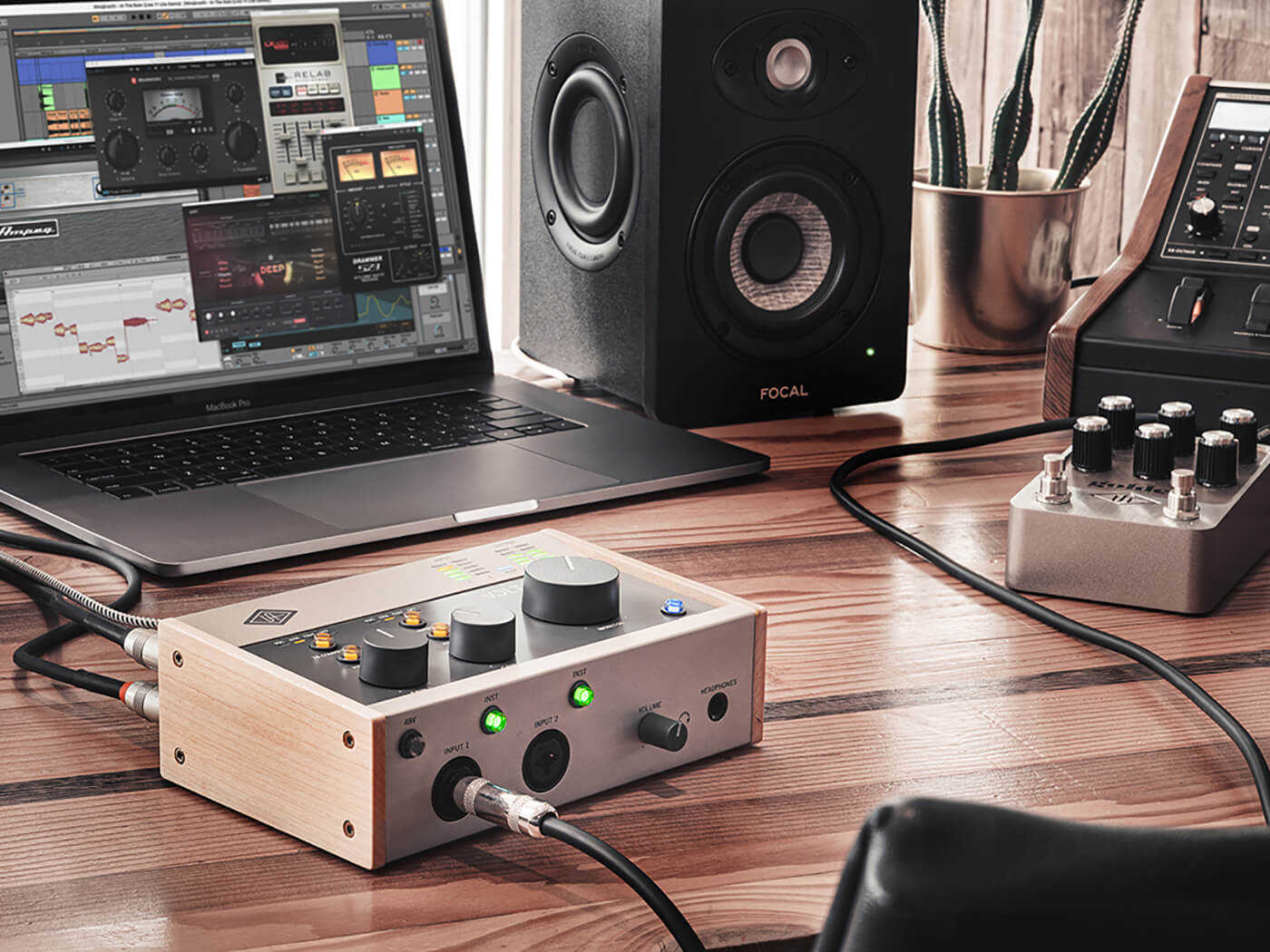
Preamps and processing
The preamps used in the Volt range give a pleasingly clean and rounded sound in standard operation. It also offers a vintage mode which engages a saturation circuit based on the classic UA 610 tube preamp. There are no actual tubes in Volt, of course, but the effect is 100 per cent analogue and very tube-like, adding weight and solidity in the low end, injecting presence into the mids, and giving the top end a pleasing sharpness and clarity.
The ‘76 models take the analogue processing a step further, with the main front-panel inputs featuring a built in all-analogue compressor that’s inspired by the classic UA/Urei 1176. This uses modern op-amps in place of the transformers and transistors found in the original, but still uses a discrete field effect transistor to modify the signal level. This gives the circuit the same compression characteristics as a 1176, albeit without the transformer-derived distortion of the original.
To keep things quick and easy to use, the compressor offers a choice of three presets: vocal, guitar, and fast attack. All use a fixed ratio of around 6:1 with attack and release times selected carefully to suit the stated use. The overall strength of compression can be controlled via the preamp’s gain knob, further adding to the 1176-ness of the compressor. All in all, this makes for very usable and sweet-sounding input conditioning.
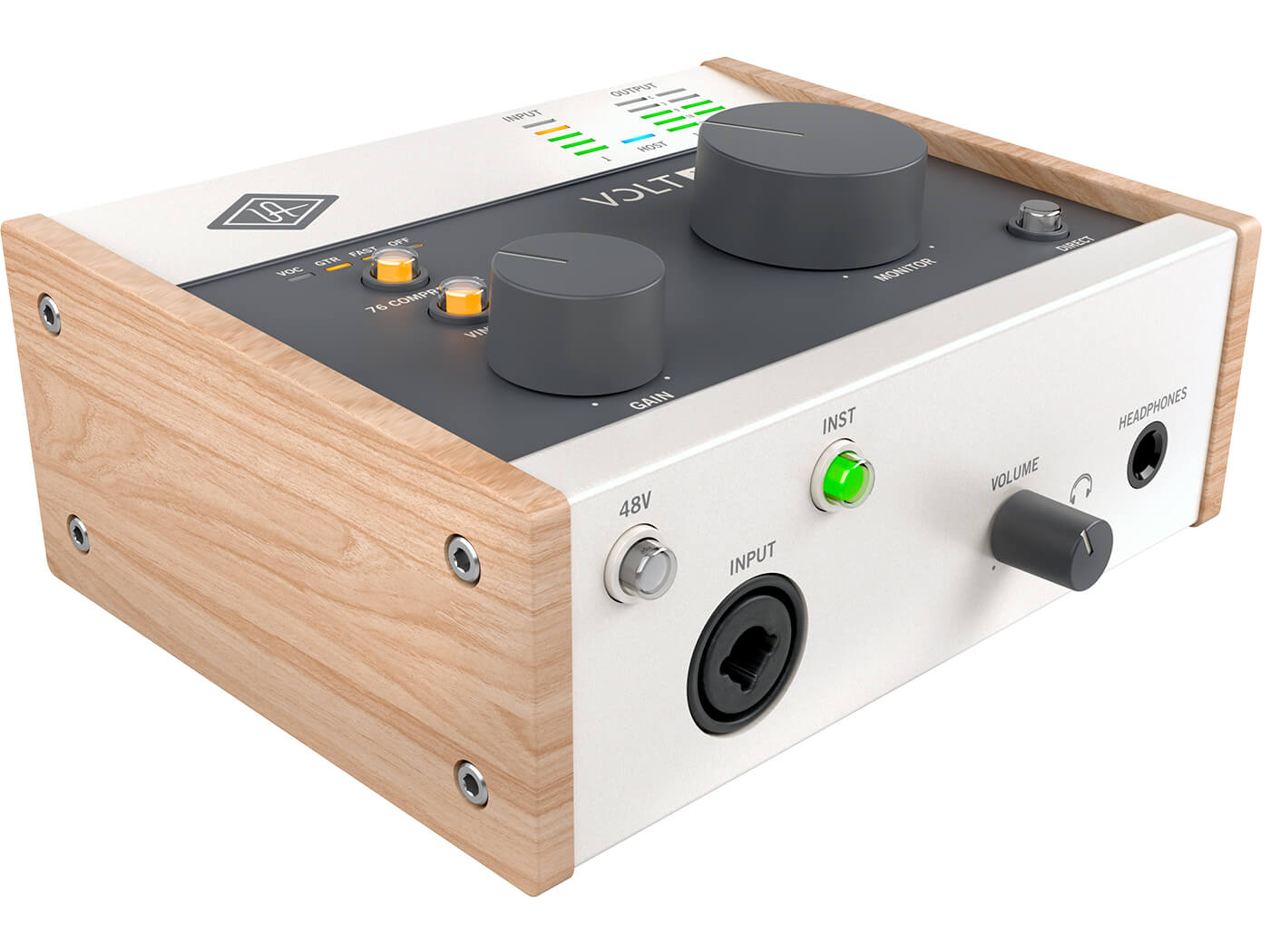
Styling & software
The 1176 compressor aside, the principal difference between the standard and ’76 Volts is in the design and styling of the enclosures. Both variants are built into sturdy metal casings, and feel satisfyingly solid and weighty, but look quite different. The standard units have a smart if unremarkable appearance, with all controls and buttons – input gain, output level, vintage on/off and so on – positioned on the front panel. The ’76 models, however, use more of a “desktop” form factor, with controls and buttons spread across both top and front panels, making for a much more spacious layout and allowing larger input gain and output level dials.
The extra space allows for improved metering too. Where the standard units only have two-segment level meters, tucked in tightly next to the corresponding input/output controls, the ’76 sports five-segment meters that occupy their own area of the top panel. The ’76 enclosures are finished with smart-looking wooden end pieces too.
In order to give Volt owners a complete out-of-the-box studio solution, UA has curated a software bundle that contains everything you need to get going. It includes Ableton Live 11 Lite, Celemony Melodyne Essential, Relab LX480 Essentials reverb, Softube Marshall Plexi Classic, Brainworx/Plugin Alliance Ampeg SVT-VR Classic, UJAMM Virtual Drummer DEEP and Virtual Bassist DANDY, and a Spitfire Audio LABS instrument library.
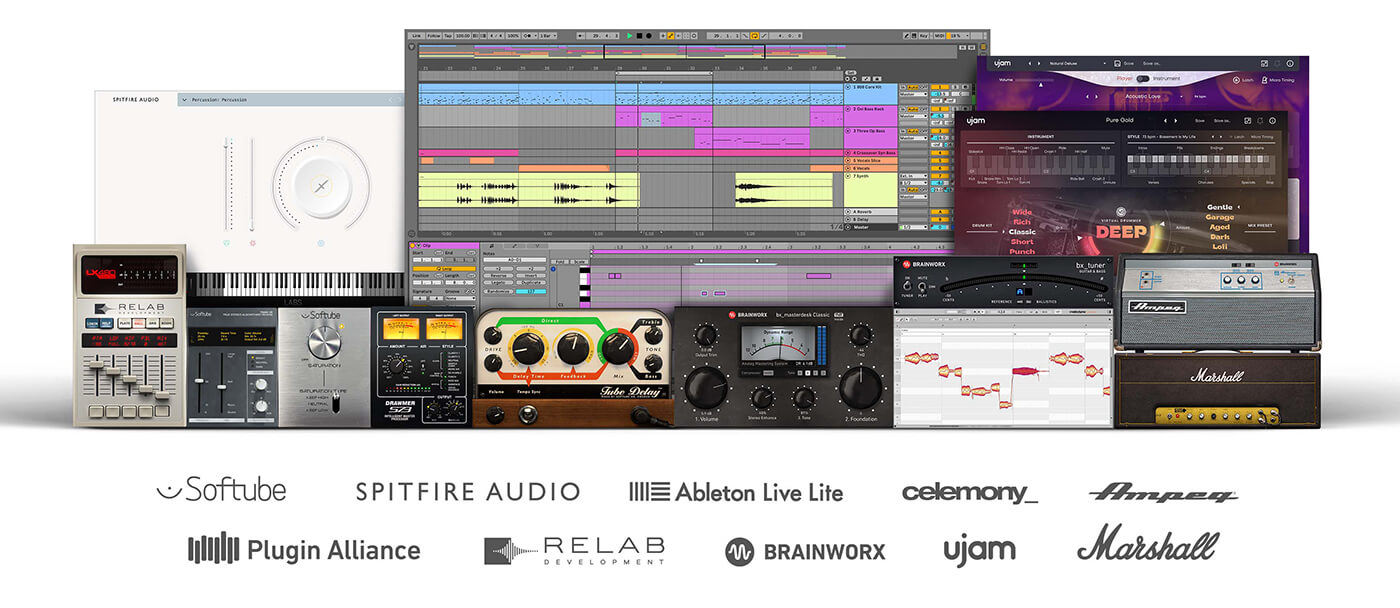
Conclusion
Volt’s price and specifications put it up against an awful lot of competition, much of which will use the same (or very similar) converters. As a result, the biggest differentiator between units lies in their analogue circuitry, an area in which UA’s decades of experience gives Volt a distinct advantage. The vintage preamp mode lends character and a sheen of quality to your recordings that belies the affordability of the hardware – this is especially true of the standard models, which are very competitively priced.
The built in compressor of the ’76 models makes an even bigger difference. Make no mistake – this is a proper analogue compressor that does a fine job of recreating the 1176’s musically sympathetic transparency and responsiveness, and it’s rare to see input conditioning of this sort on any audio interface, let alone one that’s so affordable. It’s a stroke of genius that’s sure to make Volt as popular in home studios as Apollo is for the pros.
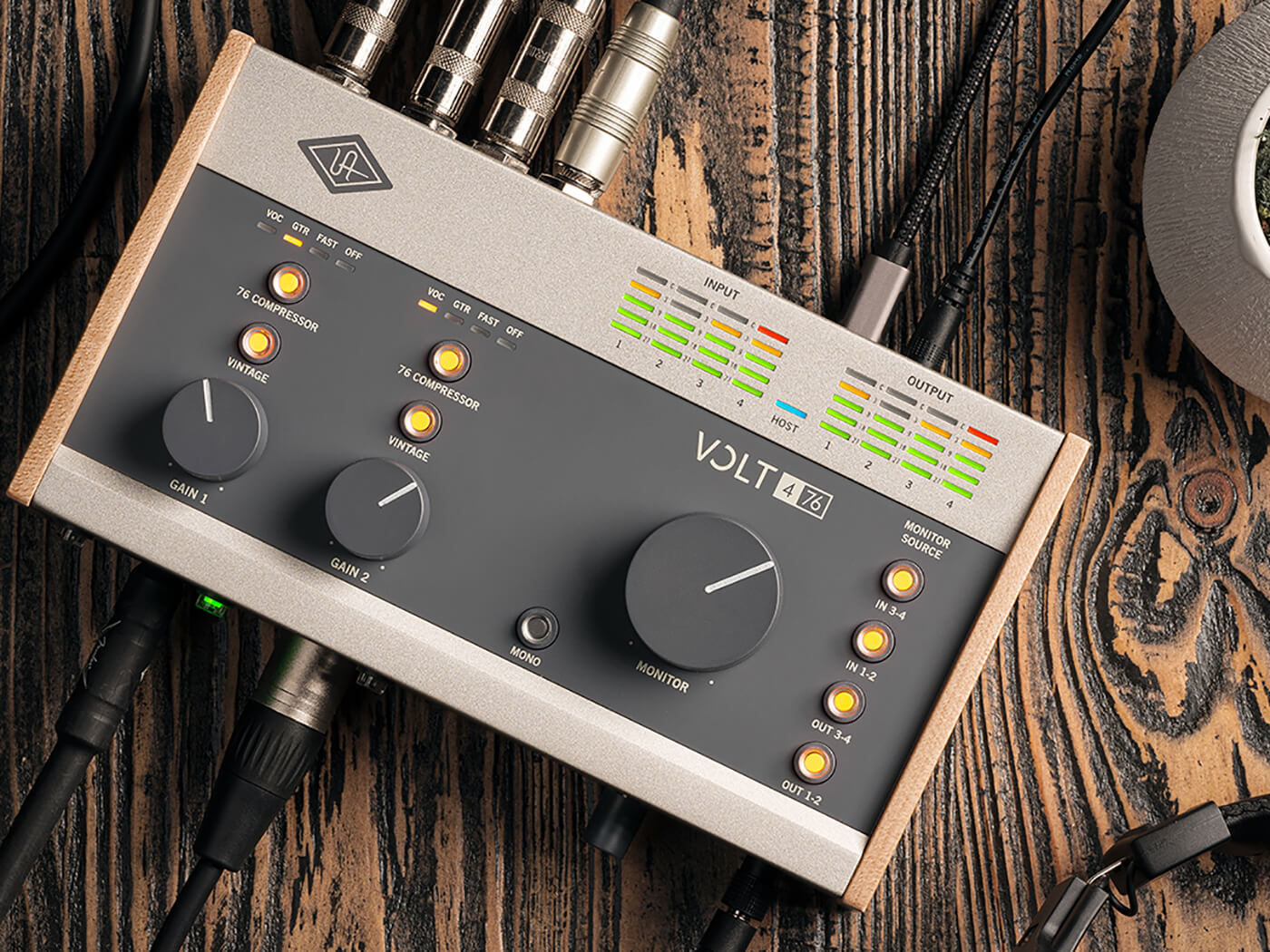
Key Features
- Multiple I/O configurations in range (1-in/2-out, 2-in/2-out, 4-in/4-out)
- USB-2.0 connection and bus-powered
- Runs on macOS 10.14+, Windows 10+, iOS 14+
- Compatible with Intel, AMD and Apple Silicon CPUs
- MIDI I/O
- Built-in analogue compressor (’76 models) and vintage preamp mode
- Full software bundle containing DAW, processors, effects and instruments
- Volt 1: £120 / Volt 2: £165 / Volt 176: £215 / Volt 276: £260 / Volt 476: £320 / Volt 2 Studio Pack (includes Volt Mic & Headphones): £275 / Volt 276 Studio Pack (includes Volt Mic & Headphones): £370